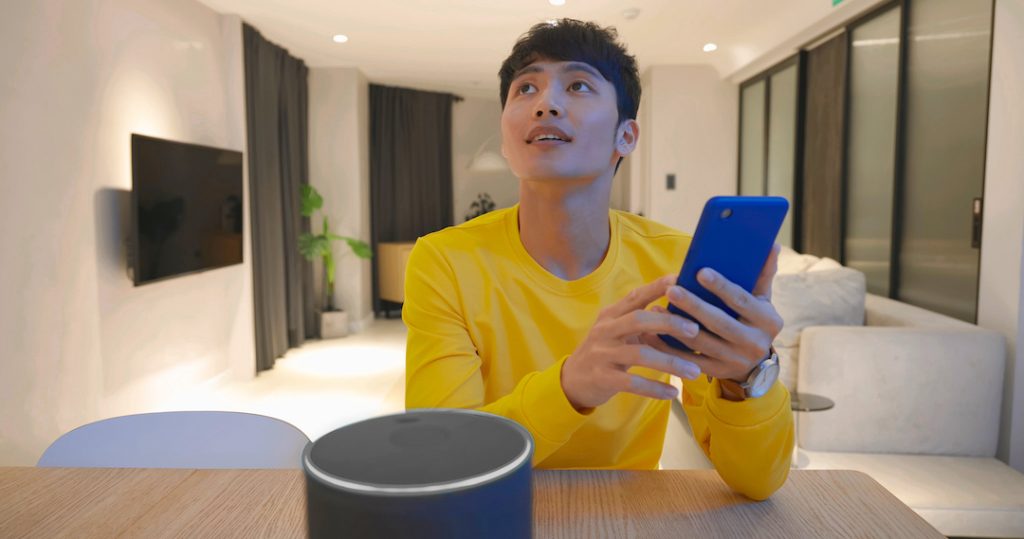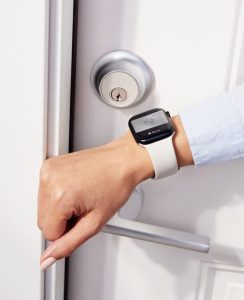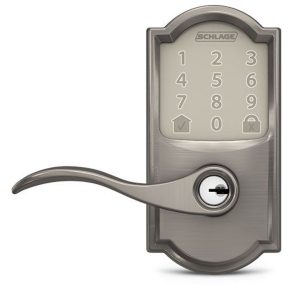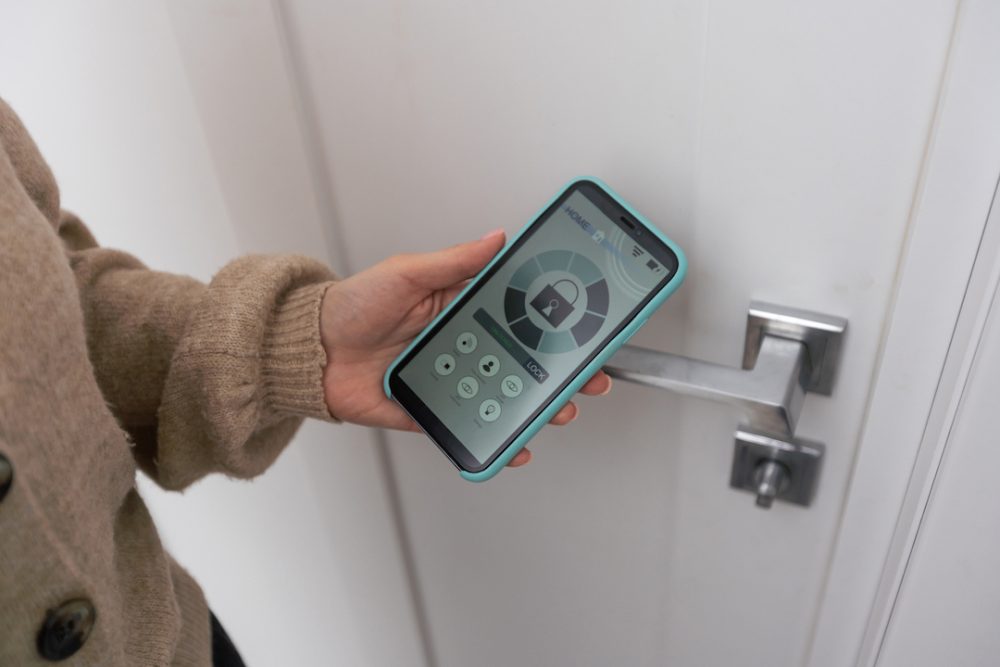Unlatch your hesitancy when it comes to smart door locks because not only are they here, they are growing worldwide. Allied Market Research projects that the global smart door locks market will reach $12.5 billion by 2032, up from $1.8 billion in 2020. This growth is estimated to have a compound annual growth rate (CAGR) of 17.6 percent from 2023 to 2032. Growth factors include an increased “concern for safety and security, a rise in demand for smart locks, a surge in the popularity of the Internet of Things (IoT) for smart homes, and an increase in demand for smartphone connectivity.” Smart technology has become embedded into nearly every facet of the home, and these numbers indicate that savvy consumers are looking to upgrade their traditional door locks for a smarter version.
Smart homes are consistently increasing in popularity, so knowing the specifics of which devices to purchase and how they can fit into a user’s overall home is paramount to success. According to Statista, the number of consumers outfitting their homes with smart technology is expected to continuously increase between 2023 and 2027 by 30.2 million households, a 47.61 percent increase. By the end of 2027, the number of smart households is expected to reach 93.59 million.
Though smart homes are undoubtedly multiplying, setting them up takes a lot of planning and research. Smart door locks are only one facet of a smart home, so taking into consideration how to choose the right smart door lock for a home is paramount to increasing customer satisfaction rate and giving them the home of their dreams.

Considerations Before Constructing A Smart Home
Smart door locks are one of the many devices that are making their way into smart home ecosystems, the foundation of any smart home. Smart home ecosystems are “a group of smart devices that work really well together,” according to Smart Home Explained. Typically, these devices are manufactured by the same company/partner companies or share a brand name. Devices that operate on the same smart home ecosystem have fewer risks for technical problems and allow information to be shared seamlessly between them. Examples of common smart ecosystems include Google Home, Amazon Alexa, and Apple Homekit.
Prospective customers should be wary that some home ecosystems operate on a closed system. Android users may be familiar with the concept in situations where they joined an iMessage group chat, only to be the sole SMS green text bubble. This occurs because iMessage is not compatible with non-Apple devices. Many smart home ecosystems function similarly, which propels customers to purchase more products from a company to make their smart home and the devices in it as seamless as possible. Checking which devices are compatible with a smart home ecosystem will save prospective users headaches. Smart homeowners who attempt to add a non-compatible device to a home ecosystem will inevitably struggle, so doing research on which devices are compatible with which smart home ecosystem is crucial.
Matter: The Future of Smart Home Ecosystems
Luckily, closed smart home ecosystems are becoming a thing of the past. Developments are being made for consumers who want diverse products to populate their smart home ecosystems seamlessly. Matter is a unifying standard organized by the Connectivity Standards Alliance based on Internet Protocol (IP) standards. It seeks to improve security, “enable communication across smart home devices, mobile app, and cloud services, and define a specific set of IP-based networking technologies for device certification.” Officially launched in 2022 at the IFA Newsroom, Matter is an attempt to equalize the smart home technology industry by making it interoperable between device manufacturers, brands, and companies. Over 200 companies have approved Matter for use across platforms and manufacturers.
Customers interested in purchasing smart home products that are Matter-certified should head to CSA’s certified products search page.
Types of Smart Door Locks
There are a number of smart door locks that are compatible with a variety of smart home ecosystems, but deciding which one can suit your humble tech abode can be difficult. Generally, there are two categories that smart door locks fall into: ones with smart technology that can be adapted to an existing lock and ones that require a complete lock with smart capabilities to be installed. Smart technology unites the two categories by enabling users to lock and unlock their doors via their smartphone and an integrated smart home system. No physical keys are required!
To simplify the process of choosing a smart door lock, here are two kinds that are driving the global smart door lock market as outlined by Allied Markets Research:
Deadbolts

Locks with deadbolts are considered an effective way to prevent unlawful home entry by brute force. Deadbolts involve a bolt inserted manually by way of a key into a strike plate when a door is closed. Allied Markets Research projects that deadbolt smart door locks will dominate the market during the forecast period. Deadbolt smart door locks offer a variety of features, such as PIN code entry, remote access control, biometric identification, and proximity sensors.
A deadbolt smart door lock that is both stylish and secure is the Level Lock+ by Level Home. The Level Lock+ offers a sleek smart deadbolt door lock with heightened security and reliable smart capability while preserving that classic door lock look by embedding the technology inside the lock itself. Level Lock+ is compatible with Apple home keys on compatible iOS devices. The Level Lock+ can also be locked and unlocked via finger touch, the Level app, and included key cards and regular keys.
Lever handles

Lever handle locks are easy to operate because of the smooth spring mechanisms embedded in their handles that allow them to return to their original position. Lever handles are often locked with a press-in or twist button. Allied Markets Research expects the smart lever handles locks to grow at the highest CAGR between 2023 and 2027.
The Encode Smart WiFi Lever by Schlage connects to a home’s Wi-Fi network via the Schlage Home app and allows homeowners to control and monitor their home from anywhere. The Encode Smart WiFi Lever can be paired with Amazon Alexa and Google Assistant.
Smart door locks ensure safety, reliability, and ease of use for homeowners all over the world. When it comes to modifying such a crucial part of a home as locks, there should be careful consideration of all factors that influence smart home technology.















